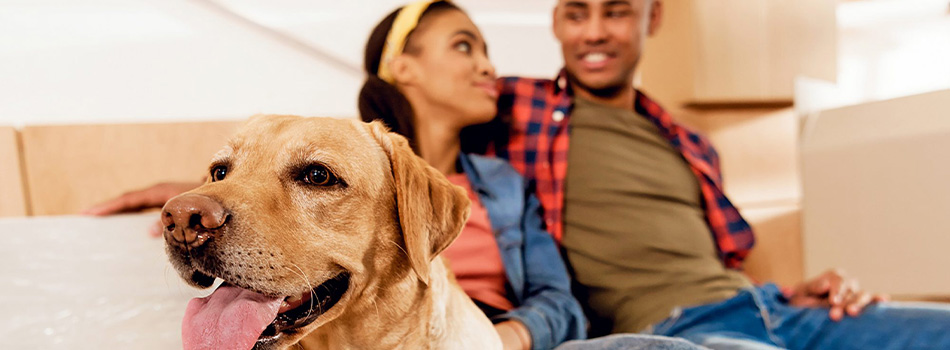When we move to a new home, there's no denying that it can be one of the most stressful moments in our lives. But among all of the boxes and packing tape, you might not realize how stressed your pets are too! Here are some ways on making this transition as easy for them as possible.
If you're looking for an apartment that's perfect for your furry friends, make sure to walk around the neighborhood before picking out one. Look out for aggressive or unattended dogs in the area just as much as potential hazards like busy intersections and sudden slopes.
Cats and Dogs Have Different Space Needs
Dogs need more room to roam and play, while cats can be happy in a smaller space.
Since dogs are larger creatures than cats, they require bigger living spaces for themselves. Cats have different needs when it comes to square footage; the small size of their homes accommodates them just fine!
- Consider your dog’s needs on a case-by-case basis. Older dogs, puppies, and dogs with house training issues will need to go outside often, which might be difficult in an apartment building with lots of stairs or no green space like a dog park.
- For your feline friends, ensure your potential new space allows for plenty of room to build vertically—it’s easy to create a lot of vertical space with shelving, such as kitty blocks on top of furniture.
Prior to Moving Day
Make sure your pets are fitted with collars and ID tags with your name and current cell phone number. Microchipping is also recommended and will serve as a backup if your pet loses its collar.
Contact Your Vet
If your pet is prone to car sickness, make sure you visit your veterinarian a few weeks prior to your move to get any prescribed medications and feeding recommendations.
For long-distance moves, gather vet records and prescriptions for the interim while finding a new vet once you have moved. Talking to your vet can also be a great way to gather recommendations for vets in the area you are moving to.
Packing Up Your Home
This can be a scary process for skittish dogs and cats alike. Cats in particular are not fond of change, so it's important to keep them from running away during the moving day by keeping them secluded or at a friend’s house until you decide which room is best left untouched on move-in day. On packing days, try to keep their routine as normal as possible with food kept out and toys available if they want some extra stimulation while being confined indoors because this will help make sure that there won't be any surprises!
Moving Day
Make sure your pets are secured in a crate or closed room of your house or apartment until you are ready to load them into your car. The activities and sounds of moving day will be frightening to your pets, so it is important that they be kept in a secure area to reduce their stress as much as possible and to prevent an accidental escape.
Always transport cats, small dogs, and other small animals in a secure, well-ventilated pet carrier. Keep larger dogs leashed and under control at all times. The stress of a move can cause even the most obedient dog to run away in unfamiliar surroundings. NEVER transport any pet in an open truck bed, the trunk of a car, or the storage area of a moving van.
For long-distance moves, make sure you give your pet potty breaks and fresh water whenever you stop for a break yourself. Make sure pets are leashed at all times during potty breaks.
Enjoy these helpful tips about your specific pet from Apartment Living below.
Each pet has its own needs when moving, so you want to be aware of various pet-specific tips. Regardless of what kind of pet you have, checking on them often is a great idea.
Moving with a Dog
Try to provide a large amount of physical exercise before your trip. Make sure your dog has time-consuming toys such as a kong, or a bone so that you can keep them entertained during the trip. You should also stick to your normal pet routine as closely as you can.
Moving with a Cat
As mentioned above, cats do not enjoy change, so it is important to attempt to keep things as normal as possible during the move. Avoid feeding your cat a large meal prior to travel, and make sure that you clean the home to get rid of any pet smells from previous tenants/owners.
Moving with Fish
A move can sometimes be fatal for fish. It is important to transport the fish in a sealed bag that is full of water from their old tank. Do not try to move the tank with water and fish in it. For more moving tips, you can reach out to a local pet store or aquarium.
Moving with a Guinea Pig
Guinea pigs need continuous access to hay in order to help with digestion and dental health. Be sure to provide enough food for the entirety of the move.
Moving with a Bird
When you are moving with a bird, be sure to keep it contained in a proper carrying case. Although many birds will stay perched on your shoulder, in high-stress situations like moving, this may not be the case.



